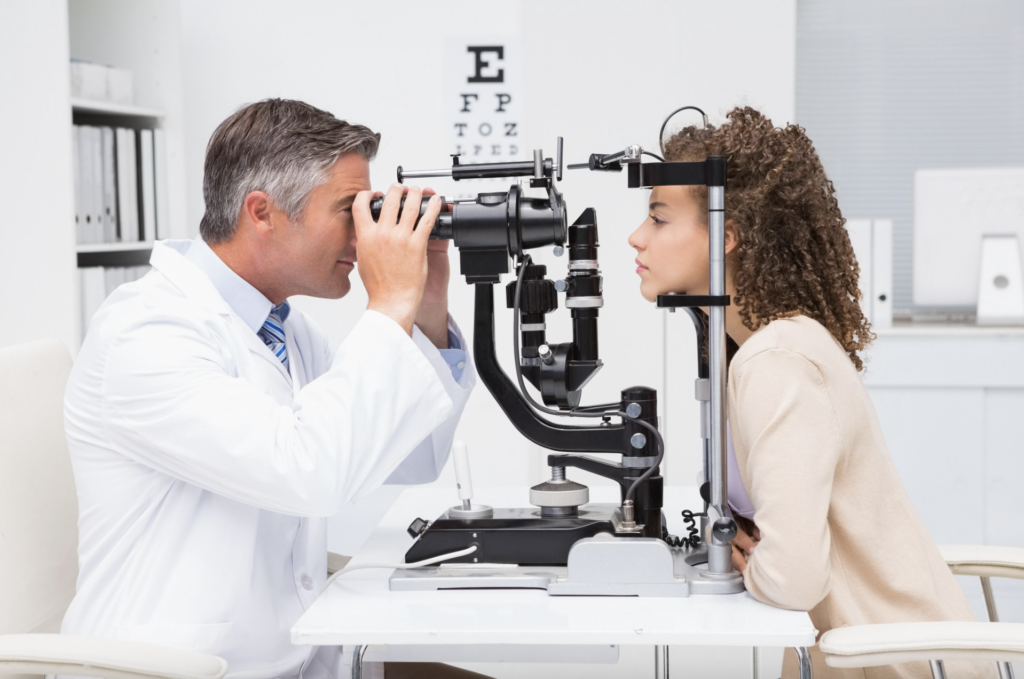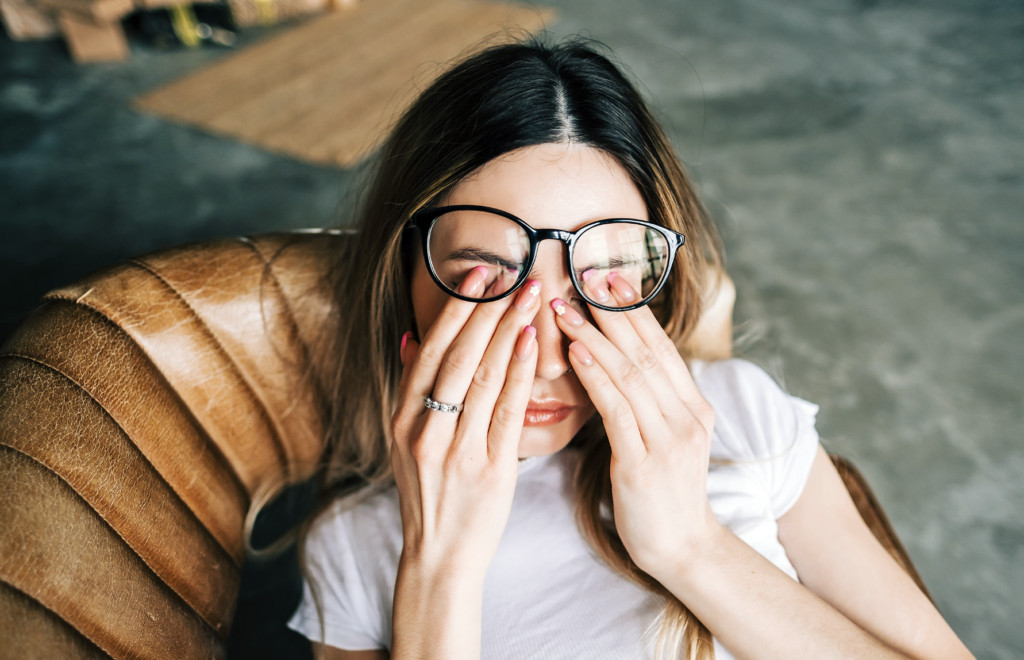
It shouldn’t be a surprise to hear that because the eyes are part of the body, certain diseases like hypertension, diabetes, hyperlipidemia, cancer, and autoimmune conditions can affect one’s vision. Interestingly, the eye exam is also sometimes how some of the aforementioned diseases are diagnosed. Having a dilated exam can indicate a great deal about one’s health because the retina (inner wallpaper of eye) is the only place in the body that an examiner can see arteries and veins in real time. Blood vessels in your brain, liver, kidney, and other organs can only be seen with invasive testing and procedures, which is why the adage “The eyes are the windows to your soul” is not too far off. If you’ve ever had a dilated eye exam and seen a picture of your retina or optic nerve, you would know what I’m talking about here, but if you’re lost, that’s okay. Let me explain by first discussing the anatomy and physiology of the eye.
Our ability to see comes from light rays entering our eyes, having them converted into computer code, and then sent to the brain for interpretation. Surprisingly, the first thing light rays come in contact with is not our eye but rather our tear film. The tear film resting on our cornea not only helps our eyes feel comfortable, but it also helps bend or refract light. Without a good tear film, one can suffer from dry eyes: a common condition with symptoms like intermittent blurred vision, burning, sandy feeling, eye fatigue, redness, and pain. Our tear film is made from 3 separate layers. The top layer consists of oil secreted by glands inside our eyelid like geysers. Think many Old Faithfuls in Yosemite. This oil’s job is to prevent the other 2 layers of tear film from evaporating into the universe. Key point, lubrication on the eyeball is good. Sometimes due to a slip in hygiene, bacterial overgrowth can take place on our lids, creating a downstream cascade which causes a decrease in oil production and ultimately ending in evaporative dry eye. Another cause of evaporative dry eye is looking at our phone or computer for hours on end. Doing this unconsciously decreases our blink frequency thus allowing increased exposure time of our precious eyeballs to our environmental elements. One solution is to quit your job and give up your phone. Another less extreme option is to close or rest your eyes periodically to allow your tears to recover to baseline. This means taking frequent breaks (every 20 minutes) without scrolling through your Instagram account. Over the counter artificial tear drops like Refresh or Systane are also a safe and effective option to replenish your ailing tear film. If the cause of your dry eyes is hygiene related due to clogged oil glands, then washing your eyelashes and eyelids with warm water daily, preferably in the shower, where the steam will melt the old oil, will allow the glands to open up. For some people, I recommend using baby shampoo (Johnson & Johnson) to clean one’s lids. Lids wipes you may see at pharmacies don’t work as well in my experience and supplements like omega 3 and 6 haven’t shown positive results in dry eye studies. The last fun fact to know about these important oil glands: when they are severely clogged and inflamed, they can result in a stye and if you’ve ever had one before, you may remember the metaphorical dumbbell sitting on your eyelid, looking large, red and angry. That’s another great reason to incorporate lid hygiene into your lifestyle regimen.
 There are other causes of dry eyes such as autoimmune conditions which create inflammation in your lacrimal gland (tear production factory), and side effects from certain oral medications used to treat depression, hypertension, and allergies to name a few. If you think that’s you, get an eye exam.
There are other causes of dry eyes such as autoimmune conditions which create inflammation in your lacrimal gland (tear production factory), and side effects from certain oral medications used to treat depression, hypertension, and allergies to name a few. If you think that’s you, get an eye exam.
Let’s get back to anatomy and physiology. After your tear film, light rays are further refracted by your cornea, which is the clear, dome shaped part of the eye, and also location where procedures LASIK/PRK occur. Once past the cornea, light goes through your pupil which is the black hole in the center of our beautifully colored iris. Behind that dark keyhole lies our lens. The lens’ job is to further bend or refract light so that light rays will be perfectly placed onto our retina (wallpaper of eye). If light rays ultimately fall in front of the retina, one is myopic or nearsighted. If light rays fall behind the retina, one is hyperopic or farsighted. Hang with me for one more minute. The lens inside our eye sits in a bag and the bag is suspended by thousands of little tiny thin ropes which are attached to a powerful muscle called the ciliary body. Now I know when Crossfitters hear the word “muscle”, they immediately get excited and look for WOD that may strengthen it; however, this muscle is the exception and not the rule. When we are looking at things up close (i.e. phones and computers) this muscle is contracting to change the tension of those tiny ropes causing the shape of the lens to change allowing the light rays to be focused properly. When we look at distant objects, the opposite occurs: our ciliary body muscle is relaxed and is chilling. So you can extrapolate that our lifestyle and occupations could be creating the longest workout of any muscle in our body, which again may excite some of you reading this. Imagine doing bicep curls for eight hours a day (computer use) and our rest breaks include doing kettle bell swings (phone use). As you can imagine, our rest breaks are critical to preventing feelings of eye fatigue and strain. The 20/20/20 rule can help our eye muscles recover. Every 20 minutes, look at something 20 feet away for 20 seconds. This will reset the ciliary body and allow a rest period.

A common question I’m asked is whether blue blocking lenses for the computer are helpful in preventing eye fatigue and strain. The data is mixed and inconclusive, so I tell patients it may not help, but it won’t hurt.
Once light gets past the lens, it goes through a clear jello called the vitreous which fills the hollow globe of our eye. This is where floaters or black spots occur. Increased age, a history of trauma, and myopia increase the risk of having floaters. Generally floaters are more annoying than dangerous because your brain eventually learns to ignore them. However, if the floaters are associated with seeing flashing lights in the periphery, that could possibly indicate a retinal tear and a dilated eye exam is important to provide piece of mind that the retina is intact.
The retina, or the film of the camera, is the last location of the light rays. Within the retina, there are veins and arteries which supply oxygen and nutrients and it is here where systemic diseases like diabetes and hypertension affect. For diabetes, increased sugar levels can damage the inner lining of these small arteries and veins, which eventually cause them to leak fluid and can permanently damage the retina. Sadly, diabetic retinopathy is one of the leading causes of blindness in this country. Besides eating healthy and exercise to ensure good sugar control, a yearly eye exam is important to ensure there is no bleeding in the eye. Hypertension or elevated blood pressure similarly can cause issues in these blood vessels.
The macula, which I equate to the the Beverly Hills 90210 real estate of our retina, is responsible for our central vision. Sadly, as we age, people can develop macular degeneration, a condition in which the macula slowly undergoes damage causing central vision loss. The biggest risk factors for macular degeneration are age and family history; however, other modifiable risk factors do exist like smoking, obesity, poor diet, and excessive UV exposure. Studies have confirmed that a Mediterranean diet which includes foods rich in omega and lutein, decrease the risk and severity of of macular degeneration. For certain people with a certain stage of dry macular degeneration, we do recommend eye vitamins such as Ocuvite or Preservision because they have been shown to slow the disease process down. However, these vitamins have not shown any efficacy in preventing macular degeneration in healthy eyes. Wearing UV protective sunglasses are important to prevent the horizontal deflection of UV light from entering the eye and causing damage.
Remember, the eye is part of your body. Taking care of your health will be taking care of your eyes and longterm visual health. I recommend getting a baseline eye exam to make sure your eyes are healthy. Please email with any questions. -David@mostafavieyeprinceton.com

Leave a Reply